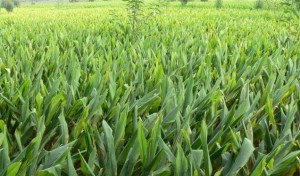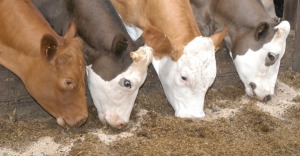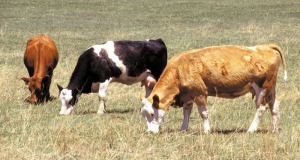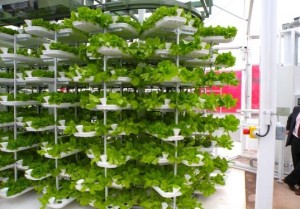 Hydroponic green fodder production or Alfculture is the most viable option for feeding sheep, goats and other livestock. The interest worldwide is increasing for hydroponic fodder as a feedstuff for sheep, goats, and other livestock. As all are aware of, Hyroponics is the science of soilless farming; it is the method of growing plants without soil. Only moisture and nutrients are provided to the growing plants. Hydroponic growing systems produce a greater yield over a shorter period of time in a smaller area than traditionally-grown crops.
Hydroponic green fodder production or Alfculture is the most viable option for feeding sheep, goats and other livestock. The interest worldwide is increasing for hydroponic fodder as a feedstuff for sheep, goats, and other livestock. As all are aware of, Hyroponics is the science of soilless farming; it is the method of growing plants without soil. Only moisture and nutrients are provided to the growing plants. Hydroponic growing systems produce a greater yield over a shorter period of time in a smaller area than traditionally-grown crops.
Hydroponic green fodder production system or Alfaculture is a year-round growing system that produces a consistent quantity and quality of livestock feed or green fodders regardless of weather conditions.
Alfaculture units are usually used to sprout cereal grains, such as barley, oats, wheat, sorghum, and corn, or legumes, such as alfalfa, clover, or cow peas. Barley is the most commonly grown forage, because it usually gives the best yield of nutrients.
Alfaculture units usually consist of a framework of shelves on which metal or plastic trays are stacked. After soaking overnight, a layer of seeds is spread over the base of the trays. During the growing period, the seeds are kept moist, but not saturated. They are supplied with moisture and nutrients, usually via drip or spray irrigation. Holes in the trays facilitate drainage and the waste water is collected in a tank.
 The seeds will usually sprout within 24 hours and in 5 to 8 days have produced a 6 to 8 inch high grass mat. After the mat is removed from the tray, it can go into a feed mixer or be hand-fed to livestock. Livestock will eat the whole thing: seeds, roots, and grass. There is minimal waste.
The seeds will usually sprout within 24 hours and in 5 to 8 days have produced a 6 to 8 inch high grass mat. After the mat is removed from the tray, it can go into a feed mixer or be hand-fed to livestock. Livestock will eat the whole thing: seeds, roots, and grass. There is minimal waste.
Alfaculture units can be set up in any building, including a garage or basement, a greenhouse is ideal because temperature, light, and humidity can be precisely controlled. Efficient, year-round production of green fodder is possible under optimal environmental conditions; approximately 70°F, 60 percent humidity, and 16 hours of light can produce maximum yields.


 Green fodders are staple feed for dairy animals. Dairy animals producing up to5-7 liters milk per day can be maintained exclusively by feeding green fodders. Inclusion of green fodders in ration of dairy animals decreases amount of concentrate feeding and thus increases profit. Therefore, for economical and sustainable dairy farming, fodder production round the year is highly essential.
Green fodders are staple feed for dairy animals. Dairy animals producing up to5-7 liters milk per day can be maintained exclusively by feeding green fodders. Inclusion of green fodders in ration of dairy animals decreases amount of concentrate feeding and thus increases profit. Therefore, for economical and sustainable dairy farming, fodder production round the year is highly essential. In comparison to conventional green fodders, hydroponics green fodders contain more protein, fat (ether extract) and soluble carbohydrates (nitrogen free extract); but less fiber, total ash and acid insoluble ash.
In comparison to conventional green fodders, hydroponics green fodders contain more protein, fat (ether extract) and soluble carbohydrates (nitrogen free extract); but less fiber, total ash and acid insoluble ash.